Tram Debate Fires Up
The plan to introduce heritage trams along the Waterfront has certainly fired up the locals.
Here are issues being debated and questions you have been asking:
Why are heritage trams being used?
Modern light rail would be ideal but if the project is going to get ticked off before Auckland Transport takes over in November, a plan for millions to be spent on modern light rail has no chance of happening in time. Heritage trams have some appeal to tourists and hopefully once the service starts, Auckland Transport could be persuaded to explore more modern options. Once again, ARC Chair Mike Lee deserves to be congratulated for making the plan move beyond the discussion stage now.
Has MOTAT got spare trams lying around?
That’s going to be an interesting issue. To find out, I poked my head in its tram shed and have noted two apart from the one used for the circuit around the museum. But are they in a condition to run a daily service around the waterfront and would MOTAT, while it has publicly supported the move, be happy to see them used this way for other than special events?.
Those trams don’t look very large?
We’re probably not talking about a lot of customers for the limited 1.5k route of clockwise between Jellicoe, Halsey, Gaunt and Beaumont streets.
I hear the trams may be battery powered?
That is likely. And Architects have already raised issues about the ‘visual clutter’ of wires.
Hamish Keith has argued for trams to run on a loop from K Rd with overhead wires along Ponsonby and Jervois Rds where a larger and more sustainable population could use them. Will that happen?
Certainly not initially but others are pushing for them to run as far as Dominion Rd (even though there are already public transport bus lane plans discussed on this site last week). At this rate we might as well revisit the 1950′s and bring trams back to all of Auckland! I would have thought Ponsonby was well served by the Link bus and trams in the middle of the street will only add to the problems pedestrians already have crossing.
But it would be wonderful to see Hamish’s concept come true. However if we are wanting to look at a light rail option for the wider inner city areas, shouldn’t we be studying the modern light rail options overseas which have been discussed here on this site and excellent examples are easily found online.
Why can’t the proposed service be connected to Britomart?
It has to be. But there are some logistical issues. The logical answer is Te Wero bridge. The bridge, for which a design was chosen, would take two lanes of public transport. However this $50m project has been deferred by the Auckland City Council until 2016 and who knows what will happen once the new masters take office and the kindest thing that could be said right now is that the project remains an expensive dream that may never happen.
The other options are to:
- Connect Halsey Street via Viaduct Harbour Avenue - appealing but difficult because of tight turns and very narrow carriage way and therefore too problematic
- Simply connect up through Fanshawe Street - too congested already with cars and buses
- Take the option of not trying to connect the Wynyard Quarter with the CBD – yet.
Obviously the latter has been taken but it’s hard to see how many people will use the service until it’s connected up to Britomart, especially as the Wynyard Quarter(Tank Farm) development area is very quiet and will be until office buildings such as ASB’s new HQ are built.
So is it a waste of money?
It should cost around $6m for which the money can apparently be found right now. Last year, there was talk of it costing $30m which would have been out of the question -and only fuelled those among the council who insist buses would be the answer around the Wynyard Quarter. It would be a shame to see buses navigating those windy small streets along the waterfront.
Where will the trams be stabled?
Again, there was talk of the need for a gold-plated $3m stabling shed but the idea now is they can be kept at sidings around the western end of Jellicoe.
Have we any resources we can call on to shortcut the development?
Christchurch has embraced heritage trams and can provide their expertise and advice and Melbourne is only 3 hours away. In fact the word is that the Victorian government is offering to give us two of its old trams if this goes ahead.
Battery powered, no CBD connection, old trams… is it really worth it?
Thanks to Mike Lee, it is happening.
It the move doesn’t happen now from enthusiasts like ARC Chair Mike Lee, it won’t happen as Auckland Transport will have much bigger issues to consider like a third harbour crossing. It would send a signal of a move to light rail in Auckland, something that has been talked about for well over half a century and been shot down everytime. Bringing light rail back in some form along a developing area of Auckland’s waterfront is a signal of where Auckland’s public transport should be moving. If we don’t move this way the Wynyard development, which has potential to be a wonderful place, will be car-centric like the rest of Auckland.
And let’s just remind ourselves of decades of talk about light rail in Auckland - remember this?

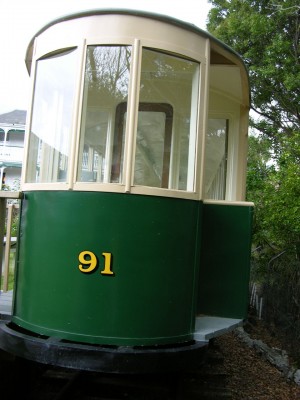
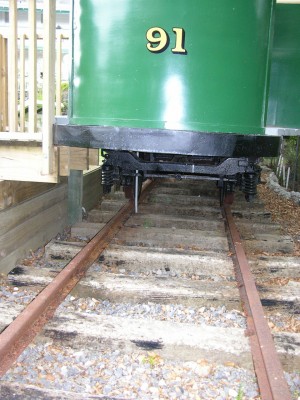
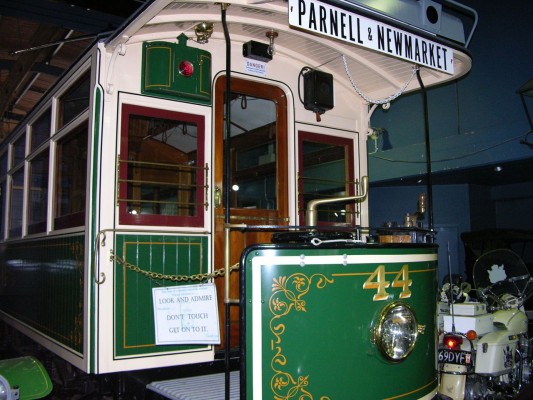
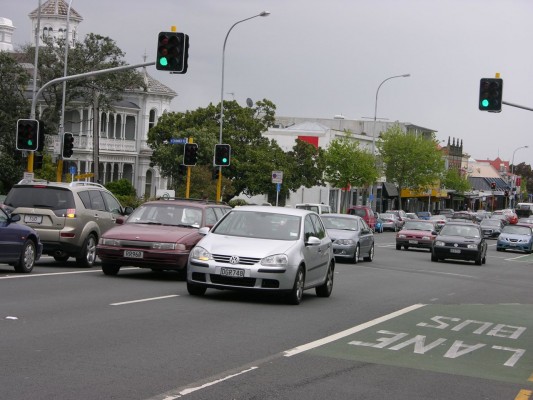
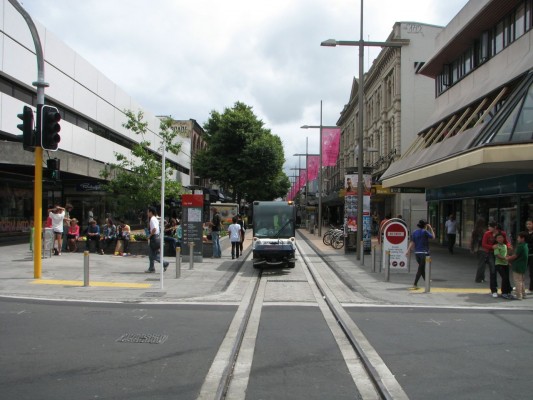










14 Comments
There is a point not mentioned and that is gauge. The suggestion Melbourne trams be used, are they Irish Gauge like Victorian railways (5′ 3″) ? Auckland trams from memory were standard gauge and Wellington trams Cape gauge like our trains (3′ 6″). Motat from memory has three lines to accomodate Auckland and Wellington trams.
If light rail is later purchased presumably standard would be necessary (4′ 8½”) We could end up with three gauges required??
couldn’t they take the tram shells/ bodies and reattach the under parts? i reckon this tram situation is something that could be built in NZ. if they wont let you guys build the trains, then someone needs to push for the building of trams? we need to be able to do it ourselves, not rely on another country to do it for us..
@ Richard
Melbourne trams are standard gauge - Christchurch operates one and I think Motat do too. Wellington trams used the unusual gauge of 4 feet.
Trams down the middle of Ponsonby Rd would actually aid pedestrians as there would be 1 lane of cars to cross followed by what was in effect 2 lanes of a pedestrian shelter and then plenty of time to wait to cross the 2nd lane of traffic. Such a move would of course take years to get through all the planning stages and would be up for vast numbers of retailers complaining about the loss of traffic blah blah…
@ rtc… loss of traffic, its a catch 22, trams could actually bring in more shoppers… because they then would know they don’t have to worry about parking…
trams are the way forward i reckon, they safe traffic problems might halt it, the point is, you build trams the traffic might actually go away.
On the E2 transport dvd series, they removed a whole section of motorway in Seoul to reopen up some town centre space, people were worried the foot traffic would go away, it actually tripled, because people could come back and enjoy the city, they parked elsewhere ( as in park and ride).
planning shamaning, its just got to be done, the problem is the people that plan it are people that are use to using a car for everything everyday, i think people need to start getting use to the fact that its time to switch to PT in a big way..
@carl - I totally agree regarrding the reduction of traffic and increased shoppers - however retailers in Auckland never seem to get this. They protested the loss of parking for the Queen street upgrade and also for the Fort street upgrade. That was what I meant by blah blah.
@ rtc… dude totally agree (sorry wasn’t having a crack at you btw) I just wish shop owners would actually wake up… places like Melbourne hum because of the trams, its all everybody talks about there.
Ok so you might not be able to do your weekly shop for your family of 5-6 and catch the tram home but honestly in inner city dwelling whom actually fits that bill? Shop owners should look at the green side of things, less car pollution, possibly more foot traffic and slightly safe roads, because traffic will actually have to slow down to allow the trams. its got to be a win win situation.
if car parking is set up correctly in areas where it can be stacked, and secondly hidden, then people may actually park and ride for the trams.
some of the train station here in Perth (yes i know its trains but an example of how quick it happened) have doubled in size, now the people know they run frequently and there is somewhere to park.
the tram needs to link with either a bus feeder station or a train feeder station, and lets face it, trams are going to appear far quicker than an underground loop tunnel train system….
Doesn’t Melbourne have a shed load i.e. several hundred, of these old trams that they don’t know what to do with and can’t sell so it’s probably quite true what Jon says that they’d give them to us if this goes ahead. It’s a shame the old Portugese trams in Henderson run on a different gauge else they could also have been used here or on any future extension e.g. along Quay street.
Carl - There are actually a-lot of sensible planners in Auckland City and Auckland Regional Government that are Public Transport buffs as to say, however their valid view get turned down by the politics in power, mainly down in Wellington.
The fact is look at what Mike Lee has achieved with the introduction of the Tram here, it’s a start he has initiated, and one that is needed to get the ball rolling, lets just hope that with the New Council coming into play they can see the benefits of such a system and start expanding on it from day one.
Josh - not having a crack, but sometimes sensible is the problem, sometimes taking a risk pays off…I just feel that whoever it is that is possibly blocking some of the ideas needs to be less conservatitive and more proactive
I’m hoping they dont go the way of Christchurch and price this as a vintage excursion ($15/adult) , but instead provide it as a useful and affordable means of transport that the people of the city actually use.
Useful, it will be not.
Auckland, New Plymouth, Wanganui, Melbourne and Sydney trams were 4 foot 8 1/2 inches otherwise known as standard gauge. Wellington was 4 foot as previously mentioned.
Unfortunately there was no official effort to preserve trams when they were retired in the 1950s. Private individuals managed to preserve two complete trams, 248 and 253 and formed the Old Time Transport and Preservation League, which became one of the founding organisations of MOTAT. Number 11, which became the Zoo classroom was donated to MOTAT in the 1970s.
MOTAT has a number of trams and unfortunately just three restored from Auckland so far [11, 44 and 248]. 248 is about to undergo a major body overhaul some 15 years since its last one, which may take a year or more. Number 11 dates from 1902 and 44 from 1906. Theyt are unique artefacts and due to their age and respect for their heritage are used sparingly only for special ocassions.
MOTAT has a numbet of unrestored trams, 17 [Double Decker], 89, 91 [displayed as a dining room], 147, 203 were all retired as garden sheds and batches in the 1950s and recovered by MOTAT volunteers and require significant restorations including the the reproduction of suitable running gear. Motors and other equipment has been sourced by the Museum for these projects. 253 [The Queen Mary] is complete but last run at the Museum in off the street condition in 1980. It requires a complete restoration of the body and running gear which could take up to three years. [Refer MOTAT Website - Tram Pages].
On busy weekends, which with iniatives such as the Council Free months, four to six trams should be in use. The MOTAT tramway carries upwards of 200,000 people a year.
As previously mentioned these are all Museum pieces, wooden framed and should be treated with care and away from traffic accident potential. That said there are still approximately 90 tram bodies in the wilds of the Coromandel, Waikato and Northland used as accomodation, sheds and outbuildings with varying degrees of alteration and deterioration. The most appropriate class of tram for the Wynyard Quarter would be the Semi Steel or N-type Auckland tram. They were the only steel framed, steel sheathed class of tram in the Auckland tram fleet and were built in the 1920s and had an Art Deco appearance, which was and still is extremely appealing in dark coronation red and cream and carried the Auckland City Coat of Arms as the Council owned and operated Auckland’s tramways between 1919 and 1929 until the formation of the Auckland Transport Board. [Refer Graham Stewarts - Always a Tram in Sight, When Trams Were Trumps in New Zealand and the 1993 revised edition of End of the Penny Section for details of the N type].
In order for the Wynyard Quarter Tramway to run before the World Cup, the trams would have to be overhauled Melbourne Ws with as little alteration to the running and control gear as possible to make it viable in the time frame. After that, there is no reason a genuine Auckland experience couldn’t be developed.
For sections of missing line, you could always tow a motor/generator set, but much better the overhead issue is resolved. Tramways don’t need fancy traction poles and side arm brackets. You can string span wires from one combined traction and lighting pole on one side of the street to the other with the running wire hung between on insolators. See any picture of Melbourne for proof of this.
A 20 tonne Melbourne or Auckland tram is unsuitable for battery operation. Gisborne has a battery tramway in the early part of last century and the trams were purpose built and light weight. The life and cost battery eventually closed the Gisborne Tramways in the 1920s, as simple economics proved it was cheaper to operate a modern Omnibus of the time. Ironically battery technology hasn’t improved much in the past 90 years…
“trams in the middle of the street will only add to the problems pedestrians already have crossing.”
Me no entiendo. How can trams hinder pedestrians crossing? Using the Melbourne system of trams in the inside lane and stopping the outside lane traffic while the trams load and unload will make it easier for peds to cross. Unless you mean pedestrians randomly walking into the trafic? Link bus and speeding apprentices have killed enough Ponsonby pedestrians for us to learn that lesson.